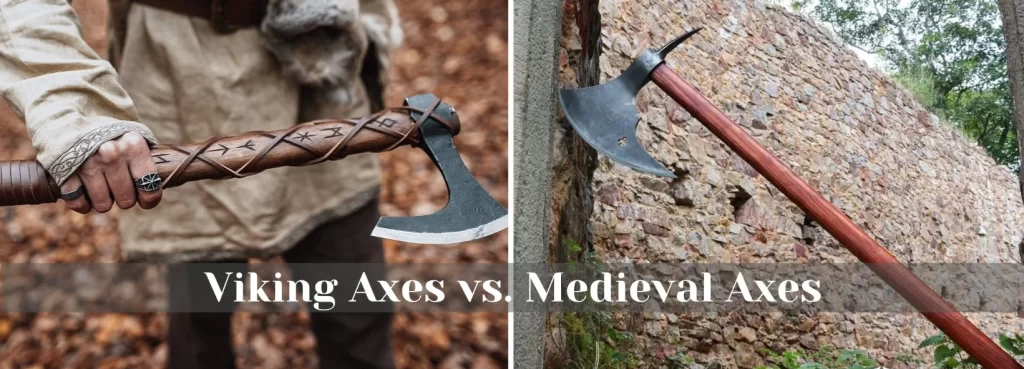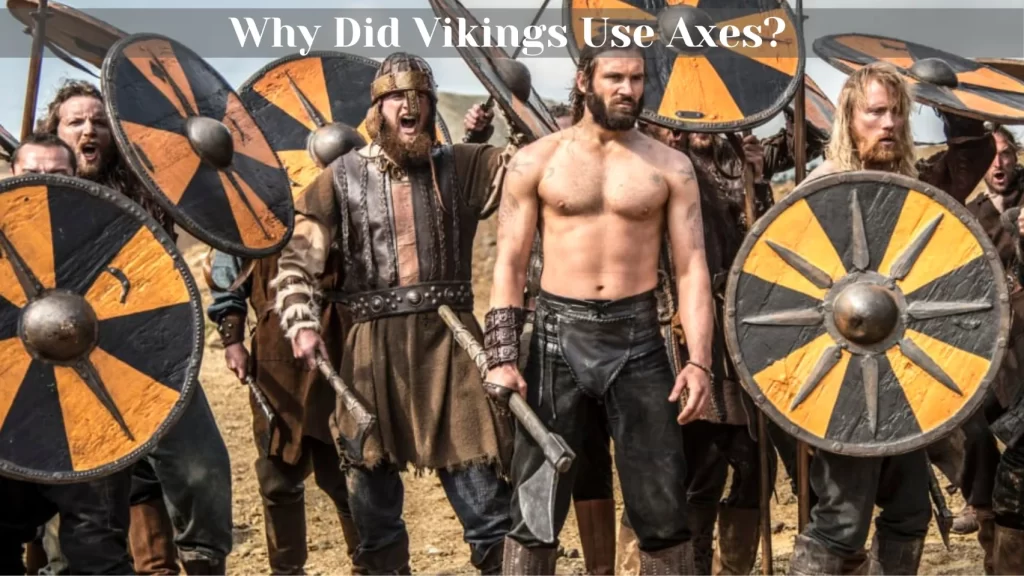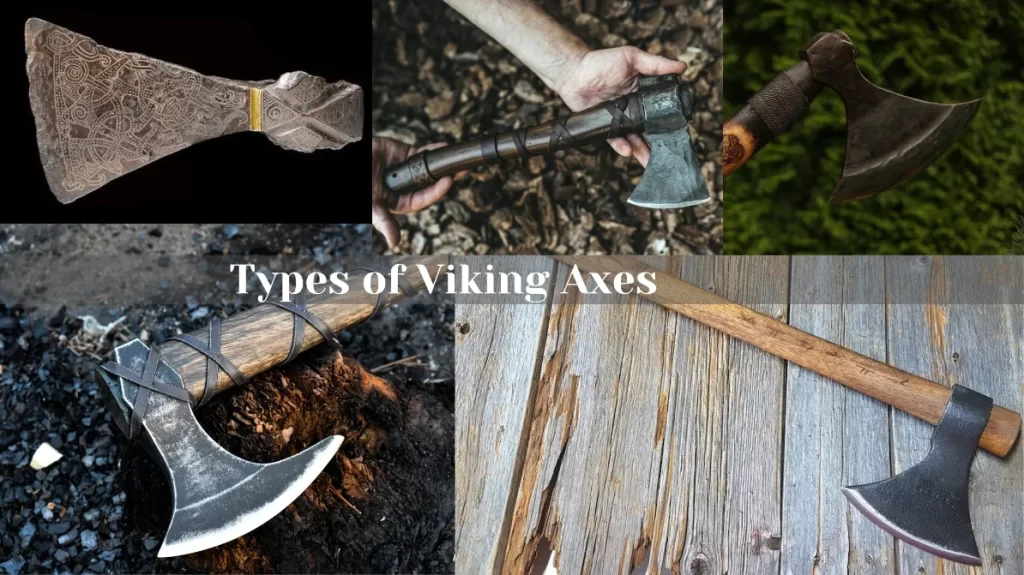As the renowned historian Bernard Cornwell once said, “Axes were the key to heaven or hell, life or death.” Axes are one of the oldest and most versatile tools in human history that they have been used for thousands of years for chopping wood, hunting animals, building houses, and fighting enemies. Plus, axes played an important role in shaping the European history, especially for the Vikings and medieval warriors. But what’s the difference between Viking axes and medieval axes?
The main difference is that the Viking axes had narrow blades, and they were typically smaller and lighter than medieval axes, making them more agile and versatile weapons. Medieval axes, on the other hand, were larger and heavier, making them more powerful and durable weapons.
In this article, we’ll learn about the Viking axes vs. medieval axes and compare them in various aspects, including design, construction, uses, and famous examples.

Contents
Differences Between Viking Axes and Medieval Axes
Let’s explore different characteristics and features to compare Viking axes and medieval axes:
Design
Viking axes were typically smaller and lightweight axes with narrower blades and longer hafts. The blades were very sharp, usually made of iron or steel, and sometimes had a bronze or silver coating. The handle was often decorated with carvings, runes, or metal bands.
Medieval axes, on the other hand, were usually larger and heavier than Viking axes. They had a broad blade that was attached to a metal or wooden shaft. The blade was usually made of steel or iron, and sometimes had a spike, hook, or flange on the opposite side. The shaft was often decorated with leather, cloth, or metal rings.
Size and Weight
Viking axes typically weighed between 2 and 5 pounds, while medieval axes could weigh up to 10 pounds or more. This difference in size and weight was due to the different purposes for which the axes were used. Viking axes were more agile and versatile weapons, while medieval axes were more powerful and durable weapons.
Viking axes were used for a variety of purposes, including warfare, hunting, and woodworking. They needed to be lightweight and easy to maneuver so that they could be used effectively in a variety of situations.
However, the medieval axes were primarily used for warfare. They needed to be large and heavy so that they could deliver powerful blows and break through armor.
Decoration
Ancient Europeans loved art (even the modern ones too), and that’s why the Vikings and medieval warriors prefer to decorate their axes. Viking axes were often decorated with intricate carvings and runes. These decorations could be symbolic or religious in nature, or they could simply be for aesthetic purposes. Common Viking axe decorations included animals, such as wolves and ravens, and Norse symbols, such as the Thor’s hammer.
Medieval axes were also sometimes decorated, but not as often as Viking axes. Medieval axe decorations were typically more simple and less elaborate than Viking axe decorations. Common medieval axe decorations included religious symbols, such as crosses and crucifixes, and heraldic devices.
Purposes of Axes
Viking axes were used for various purposes, such as battle fighting, woodworking, building houses and ships, hunting, fishing, farming, and other day-to-day tasks. Vikings were known for their raids, explorations, and trade across Europe and beyond. They used their axes as weapons, tools, and symbols of status and identity.
Medieval axes were well-suited for warfare. Their heavy weight and powerful blades made them effective against armored opponents. These axes were also used to break through enemy formations and to dismount knights.
In addition to warfare, medieval axes were also used for building fortifications, to chop down trees, build fences, and clear land for farming.
Also, read about how did Vikings make their axes to understand the difference better.
Conclusion
Finally, we have compared the Viking axes and the medieval axes and learned that both types of axes were important weapons in their respective eras, but there were some key differences between them.
Viking axes were typically smaller, lighter, and more decorative than medieval axes. They were more agile and versatile tools that could be used for purposes other than close-combat fighting, such as hunting, farming, building ships, etc. They were also more ornamental and symbolic weapons that expressed the personality and beliefs of the Vikings.
Medieval axes were usually larger, heavier, and more practical than Viking axes in warfare. They were more powerful and durable weapons that could be used against armored opponents. They were also more functional and loyal weapons that showed the allegiance and rank of the medieval warriors.
Frequently Asked Questions
How did the medieval warriors use their axes in combat?
The medieval warriors used their axes in combat along with other weapons, such as swords, spears, halberds, and shields. They used different techniques and skills to use their axes effectively in combat, such as swinging, throwing, hooking, or blocking.
They also forged their axes to suit their fighting needs. For example, they added spikes, hooks, or flanges to their axes to increase their penetration and grappling.
Were Viking axes and Medieval axes made from the same materials?
No, Viking axes and Medieval axes were typically made from different materials. Viking axes were commonly constructed from iron, known for its durability and effectiveness in combat. Medieval axes, on the other hand, were made from iron and steel.
Were Medieval axes always larger and more powerful than Viking axes?
Not always. While Medieval axes, especially those used by knights, were often larger and more powerful, Viking axes came in various sizes and designs. Viking warriors valued agility and versatility in combat, and some
Which type of axe was more durable, Viking or Medieval?
Medieval axes were typically more durable than Viking axes. Medieval knights used axes to face heavily armored opponents, and these weapons needed to withstand the rigors of battle. As a result, Medieval axes were often constructed with a focus on durability and strength, making them powerful and reliable weapons in their own right.



